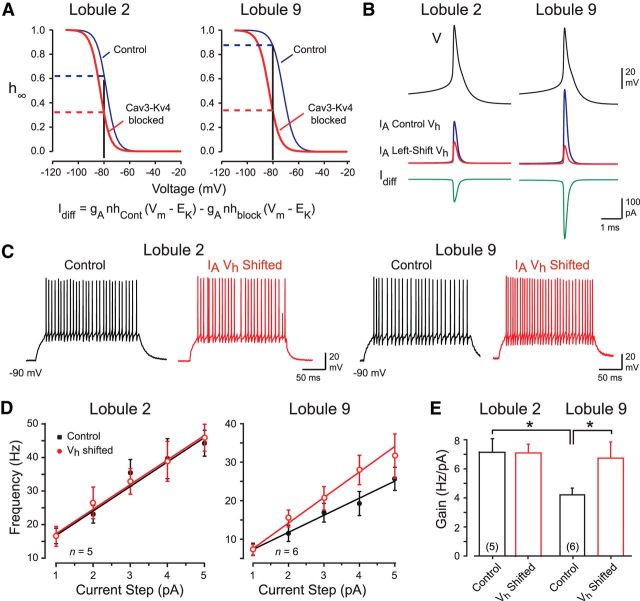Figure 5.
Dynamic clamp reveals that a shift in IA Vh is sufficient to reproduce the effects of a Cav3–Kv4 interaction. A, Inactivation curves of the IA model show the difference in IA availability before and after a left shift corresponding to the measured effect of blocking the Cav3–Kv4 complex in lobules 2 and 9 (see Fig. 2C). The predicted effect on IA availability for a −80 mV holding potential is shown by dashed lines. B, Examples of IA predicted to be evoked by a spike response (V) for control conditions and after blocking the Cav3–Kv4 interaction. The net inward difference current (Idiff) to inject through dynamic clamp is shown in the bottom row. C, Recordings of granule cell firing in response to an injected current pulse before and after applying a shift in IA Vh under dynamic clamp according to the contribution of the Cav3–Kv4 interaction (as in A and B). D, E, Frequency–current plots (D) and bar plots of the gain of firing (E) under control conditions and during dynamic clamp shifts in IA Vh (as in A and B). *p < 0.05, Student's paired t test.

